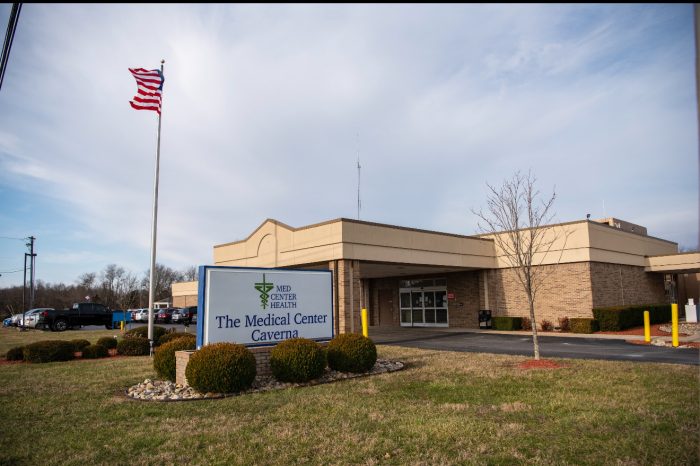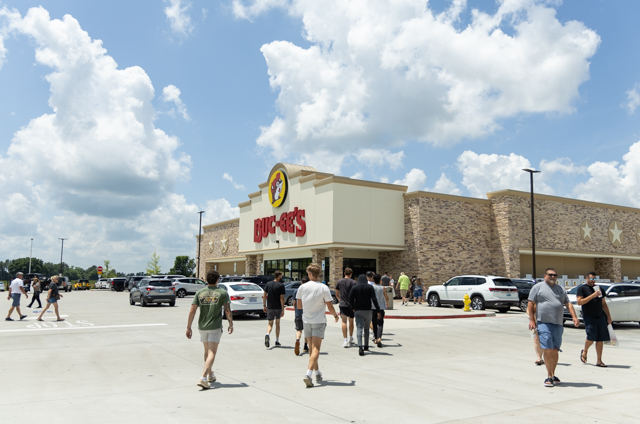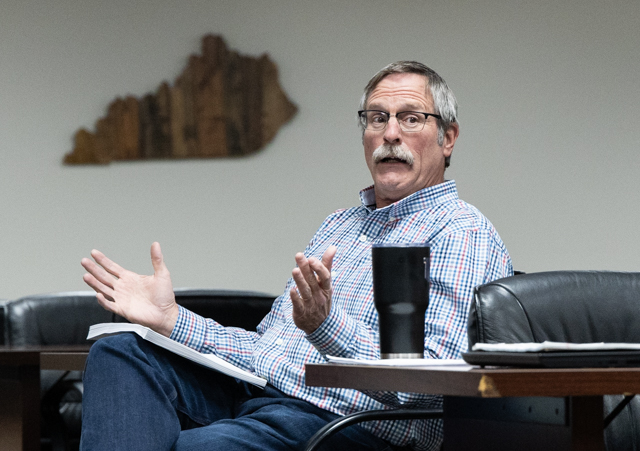Medicaid cuts put region’s rural hospitals at risk
Published 6:30 am Sunday, July 27, 2025
DAVID MAMARIL HOROWITZ
david.horowitz@bgdailynews.com
Cuts to Medicaid, which the One Big Beautiful Bill is anticipated to trim by $911 billion over 10 years, could necessitate service reductions and closures at rural hospitals, facilities that frequently operate through financial distress — and two in the region are particularly vulnerable, according to researchers and policy analysts.
Trending
The Medical Center at Caverna and T.J. Samson Community Hospital are among 35 rural hospitals statewide, and 338 nationwide, especially at risk, according to the University of North Carolina Sheps Center for Health Services Research.
All 338 went three consecutive years without profitability, are among the top 10% of hospitals with the greatest portion of Medicaid patients, or have both those attributes, according to the center.
Twenty-five percent of The Medical Center Caverna’s funding comes from Medicaid, according to Med Center Health. T.J. Samson’s Medicaid percentage systemwide is around 35%, according to T.J. Regional Health.
“… hospitals most reliant on Medicaid are both more financially fragile and more vulnerable to revenue reductions,” the center researchers wrote to U.S. senators who had requested their analysis. “Substantial cuts to Medicaid or Medicare payments could increase the number of unprofitable rural hospitals and elevate their risk of financial distress.
In response, hospitals may be forced to reduce service lines, convert to a different type of healthcare facility, or close altogether.”
Hospitals have tight operating margins that average about 5.2% — 3.1% at rural hospitals and 1.7% for rural, high Medicaid-share hospitals, according to a December 2024 report by the nonpartisan Kaiser Family Foundation.
Trending
“There’s no way to cut health insurance for 200,000 people in Kentucky without it having an impact on rural hospitals that already have razor-thin margins,” summed up policy analyst Dustin Pugel, who recently wrote for Kentucky Economic Policy on the ongoing risks for rural hospitals and their patients.
The latest Congressional Budget Office estimate found that Medicaid spending would be reduced by an estimated $911 billion and cause 10 million to become uninsured over a decade, according to KFF. This would largely be due to the budget package’s additions of new work requirements; its doubling of eligibility redeterminations; and a reduction in what are known as provider taxes and state-directed payments, which are financing tools for increasing reimbursement rates for healthcare providers, Pugel said.
Budget supporters argue it’ll reduce waste, abuse and fraud while preserving funding for the most vulnerable. Opponents contend that it’ll threaten resources and critical provisions across medically vulnerable groups, that Medicaid waste and abuse checks already exist, and that the cuts will greatly exceed any amount saved by catching waste, fraud and abuse.
“… the magnitude of these reductions — and the number of individuals who will lose health coverage — cannot be simply dismissed as waste, fraud, and abuse,” stated Rick Pollack, president and CEO of the American Health Association. “The faces of Medicaid include our children, our disabled, our seniors, our veterans, our neighbors, and friends. The real-life consequences of these reductions will negatively impact access to care for all Americans.”
The Trump administration has pushed back on the narrative that the budget package threatens rural hospitals, referencing its Rural Health Transformation Program.
Across five years, states can acquire funds from a $50 billion pot after filing rural health transformation plans and getting approval from Centers for Medicare & Medicaid Services, with CMS Administrator Mehmet Oz holding great discretion over funds. Half will be distributed equally across all states whose applications are approved regardless of their rural population size, while the other half will be distributed based on an approach that CMS will determine, KFF states; more than a dozen Senate Democrats on Friday wrote a letter to Oz questioning how the fund will be distributed.
The program could offset 37% of the estimated cuts to Medicaid funding in rural areas, according to KFF.
Rural hospitals meet accessibility needs
Rural hospitals are additionally important — and can even be critical — for their patients, as they often serve regions where the drive time to the nearest hospital is longer.
In 2018, Kentucky was part of a four-state region with the second-longest drive times from a hospital, according to a nationwide analysis by the Pew Research Center. The average drive time for those in rural communities was 17 minutes, compared to 12 for those in suburban areas and 10 for those in urban ones, according to the analysis.
For Hart County native Hope Hawkins, who lives by the border between Hart and Edmonson counties, the Medical Center at Caverna and T.J. Samson Community Hospital provide needed access to care. The two are 25 and 45 minutes away, respectively.
The next-closest hospital, in Bowling Green, would take an hour to an hour and a half, Hawkins said. She’s most concerned for her father, who has mobility issues and Parkinson’s, and for her two children.
“Obviously, we would be heavily impacted, for especially emergency care, if anything were to happen to (the two hospitals),” she said. “For the elderly and disabled, to take an hour or hour and a half drive each way to get to a hospital is just dangerous.”
Numerous times, these hospitals, and their accessibility, have come to her family’s aid in times of need.
A recent hospitalization for her father took 40 minutes by ambulance instead of an hour and a half. When he needed physical and occupational therapy, a swing bed was available at Caverna, allowing his family more access to make visits. And, when Hawkins was born 41 years ago, her mother — who had an emergency birth — stayed alive because of quick support from T.J. Samson, Hawkins said.
“Rural hospitals do not just provide emergency care, they offer a lifeline for important services,” T.J. Samson CEO Neil Thornbury stated. “Delays in receiving care can make the difference between early treatment or placing health outcomes at high risk.”
If rural hospitals close, remaining hospitals would become more crowded due to an influx of patients from rural areas, Pugel added.
He also pointed to the financial burden, in emergency situations, when travel times are longer: A peer-reviewed Jama Network study that looked at 190,311 adults with “emergency general surgery conditions” found an average cost addition of $8,284 for those with a travel time of 60 minutes or longer due to inpatient admissions, interfacility transfers or longer inpatient stays.
Thornbury said that leaders across the healthcare industry, including T.J. Regional Health, are strongly advocating for policies prioritizing access, equity, and sustainability.
“We remain committed to protecting the services our patients count on and ensuring that care remains close to home,” Thornbury stated.
Med Center Health stated that the implications for not-for-profit hospitals such as its own are “concerning and must be thoughtfully addressed.”
“However,” the organization added, “we remain committed to our mission of caring for people and improving the quality of life in the communities we serve.”
Horowitz reports for the Daily News via a partnership with Report for America.







